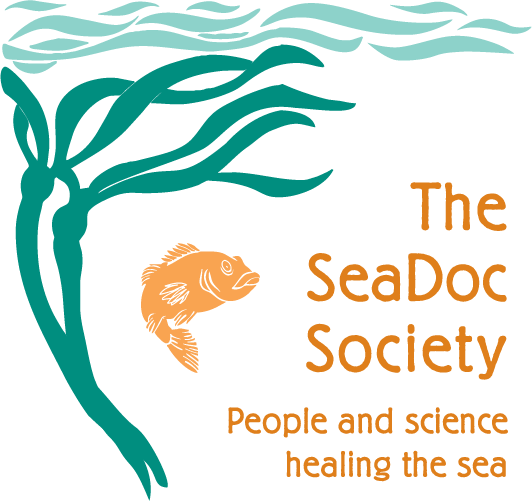For most folks, the surface of the Salish Sea exists as a beautiful albeit slightly forbidding border. Our inland sea is wonderful to ferry or paddle across and a fine comfy home for seals, killer whales and other critters. But jump into that cold water? No thanks.
There’s an entire subclass of people, though, who look at our chilly green water and see opportunity. Escorted around reefs by curious kelp greenling, local divers regularly engage in staring contests with lingcod, link arms with giant octopus, peep at nudibranchs and attend rockfish schools.
This hardy band of deep breathers knows that underwater images in books like The Salish Sea: Jewel of the Pacific Northwest aren’t just exotic, aspirational fantasies; divers see these colorful creatures every time they strap on a mask. With such awesome diving in our front yard, it’s no wonder that Washington State has the 3rd highest number of certified scuba divers per capita in the U.S.
A newly released SeaDoc study led by Dr. Katharine Wellman, resource economist with Northern Economics, asked local divers about the most important factors in choosing underwater sites to visit. Not surprisingly, number one was “abundant wildlife.”
Spending their down time literally immersed in the environment, divers naturally tend to be passionate advocates for healthy marine ecosystems. Many even volunteer as citizen scientists, doing underwater surveys, deploying fish-tracking instruments, and acting as early warning systems for unusual mortality events like the 2013 Sea Star Wasting Disease outbreak.
Research has also shown that divers do more than their share to contribute to a healthy local economy, spending more per activity day than any other outdoor enthusiasts. Our new study found that just the approximately 1,000 state residents who belong to Washington’s scuba clubs contribute five million diving dollars to the state’s economy each year.
“Considering that there are an estimated 100,000 certified divers in the state,” says Dr. Wellman, “and thousands more in British Columbia, plus all those who travel to the area to dive, we’re talking about a deep financial impact on the region." Diving, together with other recreational activities like fishing, kayaking, coastal hiking, wildlife and whale watching, contributes billions to our local economy in direct and non-market benefits.
Each one of those dollars and all the related jobs are dependent on a functional, flourishing Salish Sea ecosystem, something we at SeaDoc are constantly working on whether we’re at our desks, in the lab or when we’re lucky enough to be getting down with our dive buddies.
Read the full report here: Economic Impacts of Washington State Resident Scuba Divers.
SeaDoc would like to thank Rick Stratton of Diver News Network; Mike Racine of Washington SCUBA Alliance; Josh Reyneveld and Maya Kocian of Earth Economics; Dan Tonnes, Adam Obaza, Steve Copps and Leif Anderson of NOAA; Janna Nichols of REEF; Craig Burley and Dayv Lowry of Washington Department of Fish and Wildlife; Patrick Christie at the Univ. of Washington; Fran Wilshussen and Preston Hardison at the Northwest Indian Fisheries Commission, and the many dive shops, clubs, and recreational divers who helped scope this project and collect data used for the economic valuation.
Banner photo: A diver gets an audience with a Puget Sound King Crab (Lopholithodes mandtii). Photo courtesy of Brandon Cole.









